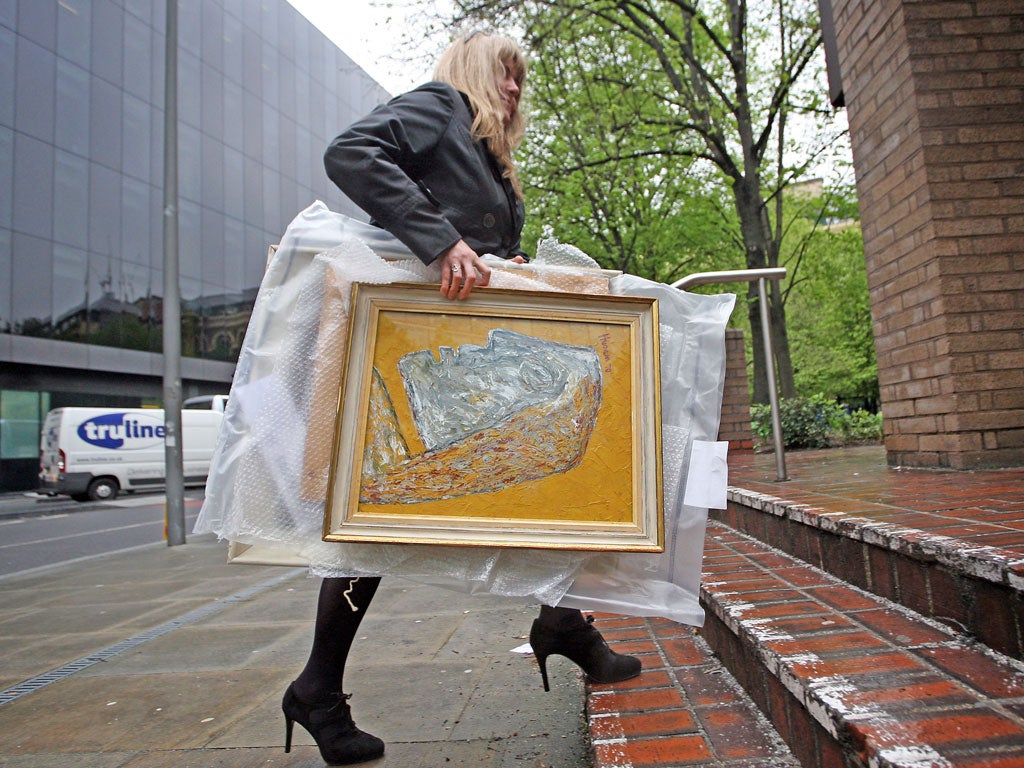Behind bars: the pub chef who cooked up masterful forgeries in his spare time

He dreamed of a glittering career as a successful artist; he ended up at 4.30am every day working as a chef in a pub. Snubbed for decades by an art world which refused to buy his paintings, William Mumford finally struck on his plan of revenge to became one of Britain’s most prolific fine art fakers.
The remarkable story unfolded yesterday of how the former market art seller recruited a crew of colleagues down on their luck from the Roundstone pub in Littlehampton and went on to dupe experts at one of the world’s premier auction houses.
Working from a spare bedroom of a rented house, Mumford, now 63, knocked out four paintings a week for five years notably in the style of celebrated Indian artists of the post-independence period. He recruited a cleaner and a fellow chef to peddle them on eBay and at small auction houses to tap into the booming Asian market.
Two of his paintings made their way to Bonhams auction house in London where they were authenticated and sold in Dubai for a combined total of more than $40,000 before he was finally rumbled. Yesterday - with ten of his artworks laid out in a London courtroom - Mumford was jailed for two years for a scam that was potentially worth hundreds of thousands of pounds.
“For 40 years I had painted the same picture, then I put a different name on it and they queued up,” he told The Independent. “I read a wonderful quote from Mark Rothko who said: ‘A poor artist has to be a thief. He has to steal a place on a rich man's wall.’ I loved that.
“I know it sounds a bit stupid but maybe it was my revenge on the art world. But I would rather have remained a failed artist than a successful forger.”
His fakes were released on to the British art market over five years and imitated the world of Welsh landscape painter Kyffin Williams and India’s best-known artist MF Husain. Before his death last year, Mr Husain helped confirm to police that a number of Mumford’s paintings were fakes.
Police found hundreds of paintings in a garage behind his home along with gallery stamps and Victorian-era frames. A fellow chef at the pub, Anthony Resse, 24, stacked up the paintings in his car and tried to sell them at auction houses in southern England, detailing his plans with military precision on a white board at home. The pub cleaner, Martin Petrskovsky, sold them on eBay while Mumford kept painting.
Mumford admitted creating up to 1,000 forgeries and conspiracy to deceive potential buyers and launder the proceeds of the crimes. Police have found about 40 of them, with sellers in Canada, the United States and Greece. The gang sought to keep beneath the radar by selling them for generally a few thousand pounds and avoiding the large auction houses.
Julian Roup, a spokesman for Bonhams, said they had been alerted by one of the Dubai buyers suggesting that they had bought a high-quality fake. The auction house ran its own investigation and found a second painting had been sold by Mumford before calling in Scotland Yard. “However stringent your security systems, now and then something will get through,” he said.
Petrskovsky, 35, was jailed for 21 months for his role in the scam. Four others, including Resse and Mr Mumford’s wife Daphne, were given suspended jail terms for their roles.
Scotland Yard detective Michelle Roycroft said: “This complicated case highlights the pitfalls of buying works of art from online auction sites.
“We would urge people to exercise extreme caution when purchasing any work of art from online auction sites and always remember - 'If it looks too good to be true it probably is’”.
